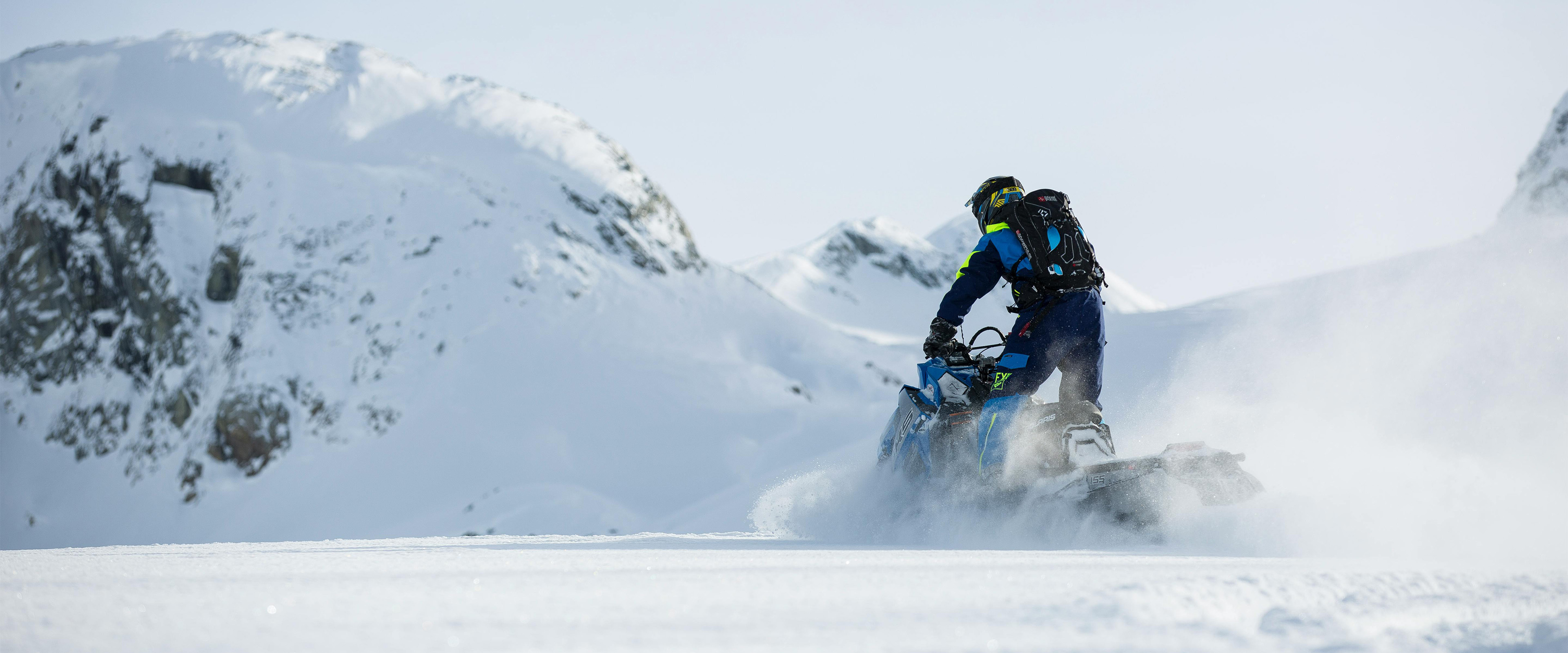Your cart is empty
Posted by Team SnowBigDeal on February 7, 2025
5 Signs of Avalanche Danger Every Rider Should Now

Avalanches don't care how experienced you are, how fast your sled is, or how deep the pow looks. Whether you're a veteran backcountry rider, a weekend warrior, or just trying to keep up with your crew, recognizing avalanche warning signs is non-negotiable. Don't let a false sense of security put you at risk.
Before you ride, make sure you can spot these five key signs of avalanche danger—because the best adventures are the ones you live to talk about.
1. Recent Heavy Snow or Rain
Fresh snowfall can be a dream to ride in—but avalanches are most likely to occur during and after a storm. The more snow that falls in a short period, the greater the risk of unstable layers underneath.
Avalanche Warning Sign: If there's been a major storm in the past 48 hours, the snow hasn't had time to settle. That means unstable terrain, high slide risk, and serious danger.
What to Do: Always check the avalanche forecast before riding. If there has been a recent storm, give the snow time to settle and stick to lower-angle terrain and flats away from avalanche terrain.
2. Strong Winds Creating Wind Slabs
Wind is a powerful force in avalanche formation. Wind can transport snow and deposit it on certain slopes, creating dense, compacted wind slabs. These slabs may look smooth and harmless but can easily break loose under minimal pressure.
Avalanche Warning Sign: If you see smooth, pillow-like snow stacked on one side of a slope, that's a red flag.
What to Do: Avoid steep, wind-loaded slopes, especially after strong winds. These areas are one of the most overlooked signs of avalanche danger and can catch riders off-guard.
3. Recent Avalanches Nearby
If avalanches have recently occurred in the area, conditions are dangerous. Avalanches don't happen randomly or in isolation—if one slope slides, other slopes with similar conditions could be next.
Avalanche Warning Sign: Evidence of fresh avalanche debris, even from small slides, is a major red flag that the snowpack is unstable.
What to Do: Change your route immediately. If an avalanche has occurred nearby, assume other slopes in the area are just as unstable.
4. Cracking or "Whoomping" Snow
If the snowpack is unstable, it will often show warning signs before an avalanche happens. The most apparent clues include hearing a "whoomp" sound or seeing cracks form in the snow as you move. These are signs that the snowpack is collapsing under pressure.
Avalanche Warning Sign: If cracks spread around your sled, skis, or boots, or if you hear a deep "whoomp" sound, the snow is highly unstable.
What to Do: Back off immediately and find a safer route on lower-angle terrain away from potential slide zones. Ignoring these signs of avalanche danger could put you at serious risk.
5. Rapid Temperature Changes
Sudden shifts in temperature can weaken the snowpack and create unstable layers. Warm temperatures can cause snow to melt and refreeze, forming ice crusts that make the snowpack more prone to sliding.
Avalanche Warning Sign: If temperatures rise rapidly or fluctuate between warm days and cold nights, risk increases for wet avalanches.
What to Do: During periods of temperature change, ride earlier in the day while temperatures are lower and the snow remains firmer. Avoid steep, sun-exposed slopes where melting snow can cause wet slides.
Stay Alert & Ride Smart
Avalanche safety isn't just about carrying gear—it's about reading the terrain and knowing when to back off. If you see any of these five red flags, rethink your route, check the conditions, and ride to tell the story.
How to Reduce Your Avalanche Risk:
- Check Avalanche Forecasts Before Your Ride (Check Your Avalanche Forecast).
- Avoid Avalanche Terrain, Including Steep Slopes, Wind-Loaded Areas, and Slopes with Recent Heavy Snowfall or Warming.
- Always Carry a Beacon, Probe, Shovel—and Know How to Use Them (Shop Avalanche Safety Gear).
Your best defense against avalanches is knowledge and preparation. Don't take unnecessary risks. Stay informed, stay cautious, and make every ride a safe one.
Resources & Citations
- National Avalanche Center – "Recognize Red Flags" – https://avalanche.org/avalanche-tutorial/red-flags.php
- National Geographic Society – "Avalanche" – https://education.nationalgeographic.org/resource/avalanche/
